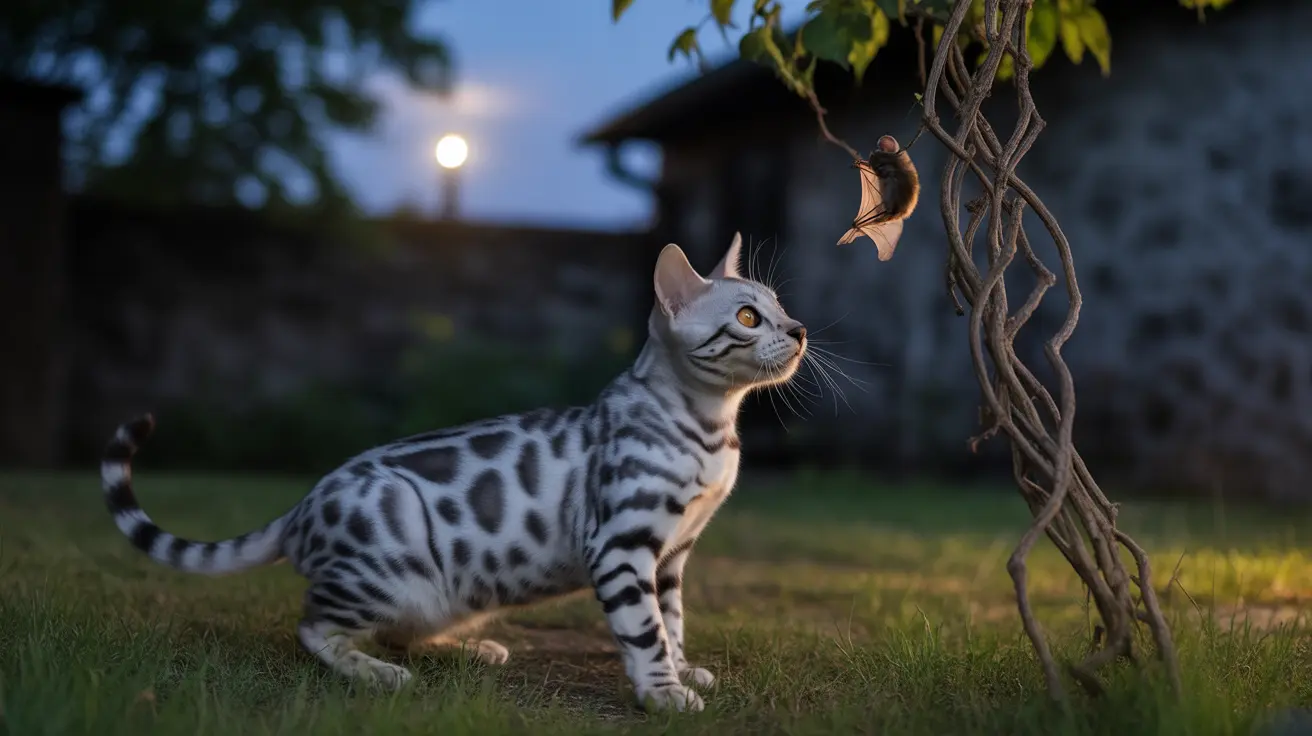Cats are natural hunters with exceptional abilities to catch and kill various prey, including bats. This predatory behavior raises important concerns about wildlife conservation, public health, and the safety of both cats and bats. Understanding the dynamics of cat-bat interactions is crucial for pet owners and wildlife enthusiasts alike.
Research shows that cats are one of the leading causes of bat injuries and fatalities in many regions worldwide. This interaction between our feline companions and local bat populations creates complex challenges that need careful consideration and management.
Why Cats Target Bats
Cats are equipped with several natural advantages that make them highly effective bat hunters:
- Exceptional night vision
- Acute hearing that can detect bat echolocation
- Quick reflexes and agile movements
- Strong hunting instincts
These natural abilities, combined with cats' nocturnal activity patterns, make them particularly dangerous to bats, especially during dawn and dusk when bats are most active.
The Impact of Cat Predation on Bat Populations
The effect of cat predation on bat populations is significant and well-documented. Studies show that in some regions, up to 89% of injured bats brought to wildlife centers were victims of cat attacks. This high rate of predation can have devastating consequences for local bat colonies, particularly endangered species.
Cats often learn the locations of bat roosts and may return repeatedly to hunt, potentially threatening entire colonies. This behavior can lead to:
- Abandonment of established roosting sites
- Disruption of breeding cycles
- Decline in local bat populations
- Increased stress on already endangered species
Health Risks and Safety Concerns
When cats kill or interact with bats, there are serious health implications to consider:
- Risk of rabies transmission
- Potential exposure to other zoonotic diseases
- Bacterial infections from bites or scratches
- Risk of disease transmission to humans
It's crucial for pet owners to maintain current vaccinations for their cats and seek immediate veterinary care if their cat encounters a bat.
Prevention and Protection Measures
To protect both cats and bats, consider implementing these preventive measures:
- Keep cats indoors, especially during peak bat activity hours
- Install proper screening on windows and doors
- Use deterrent devices around known bat roosting areas
- Maintain current vaccinations for your cat
- Consider using cat enclosures or "catios" for outdoor time
When Cat-Bat Encounters Occur
If your cat has encountered or killed a bat, follow these important steps:
- Do not handle the bat directly
- Contact your veterinarian immediately
- Notify local wildlife authorities
- Monitor your cat for unusual behavior
- Keep documentation of the incident
Frequently Asked Questions
Do cats really hunt and kill bats, and how often does this happen?
Yes, cats frequently hunt and kill bats, with studies showing that cat attacks account for up to 89% of bat injuries reported to wildlife centers. This occurs most commonly during dawn and dusk when bats are active.
How can I prevent my cat from killing bats, especially if it's an outdoor cat?
The most effective prevention is keeping cats indoors, especially during bat active hours. If outdoor access is necessary, consider restricting it to daylight hours and using deterrents like bells on collars.
What are the public health risks associated with cat-bat interactions?
The main risks include potential rabies transmission, bacterial infections, and other zoonotic diseases. Any cat-bat interaction should be treated as a potential rabies exposure and warrant immediate veterinary consultation.
Why are cats particularly effective at hunting bats, and what are their typical hunting tactics?
Cats excel at hunting bats due to their superior night vision, acute hearing, and agile movements. They typically hunt by ambushing bats at roost exits or catching them mid-flight with quick paw swipes.
How can I protect both my cat and local bat populations if I live in an area with frequent bat encounters?
Protect both species by keeping cats indoors, installing proper screening on your home, maintaining current pet vaccinations, and supporting local bat conservation efforts. Consider creating a safe outdoor enclosure for your cat if needed.
Conclusion
The relationship between cats and bats highlights the importance of responsible pet ownership and wildlife conservation. By understanding these interactions and taking appropriate precautions, we can help protect both our feline companions and vital bat populations. Remember that the simplest and most effective solution is to keep cats indoors, especially during peak bat activity periods.






